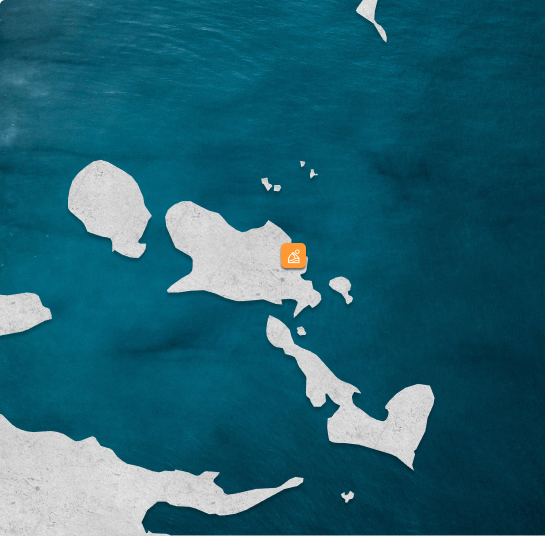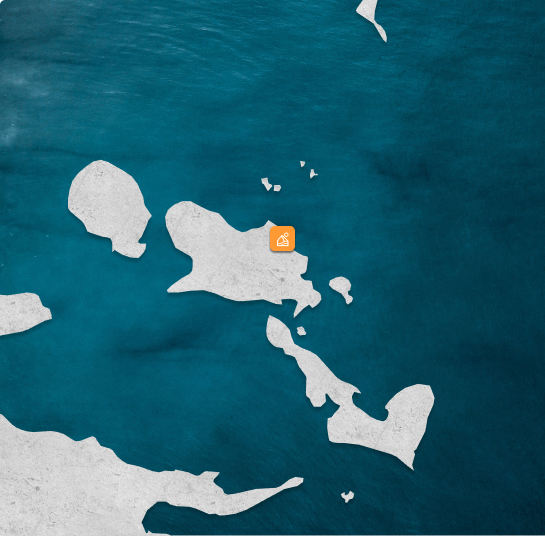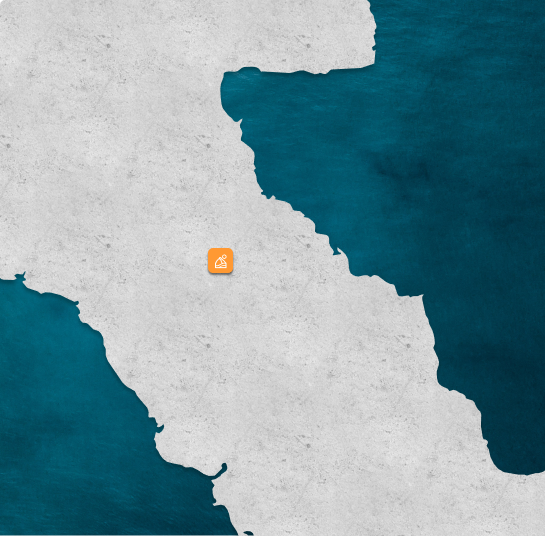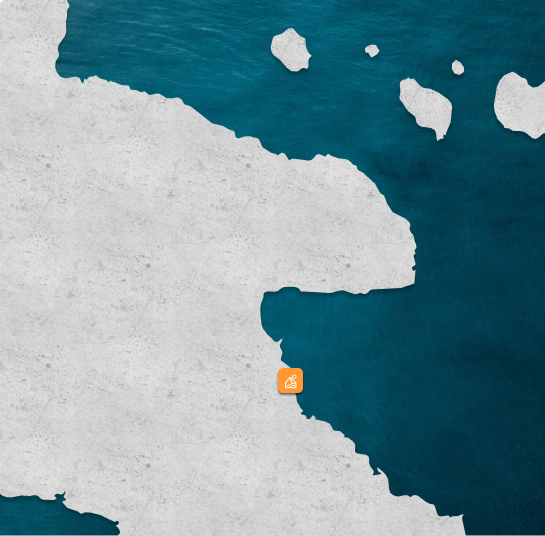Morowali, an Indonesian county with fewer than 200,000 residents, has attracted billions of dollars in investment from Chinese companies.
The list of Chinese investors includes battery materials producers Zhejiang Huayou Cobalt, Eve Energy and Guangdong Brunp Recycling Technology. In 2021 alone, they put nearly $4 billion into the county.
All the money went to the same place: industrial parks established by Chinese stainless steel giant Tsingshan Holding Group to set up nickel smelters. The silvery-white metal has wide applications in the stainless steel industry, as well as in the ternary lithium battery, the power source of new-energy vehicles (NEVs).
China, the world’s largest auto market, saw NEV sales continuously break new ground last year, almost tripling from 2020.
Like many other raw materials in the sector, the trend has driven up nickel prices. In mid-October, nickel futures on the Shanghai Futures Exchange hit a record high of 158,000 yuan ($24,845) per ton, and have since reached new heights.
However, China doesn’t actually have much in the way of nickel deposits. According to a report by the United States Geological Survey, China produced 120,000 tons of nickel at home in 2020, as the country’s reserves make up less than 3% of the world’s total. Indonesia, on the other hand, which is home to 23.7% of the world’s nickel ore reserves, produced 853,000 tons, accounting for nearly one-third of global output.
Tsingshan’s gambit in Indonesia has blazed a trail for Chinese battery material producers hungry for nickel, in large part because of its own ambitions to get into to the growing battery material business. But as they sink more money into the Southeast Asian nation, they are facing growing risks from an on-again, off-again export ban, as well as persistent supply concerns that raise the question of whether they have overcommitted to the country.
China’s gateway to Indonesia
Tsingshan founded Indonesia Morowali Industrial Park (IMIP) in September 2013. A subsidiary of the Chinese company, Shanghai Decent Investment Group, owns 49.69% of the park, while Indonesian miner Bintang Delapan Group holds 25.31%. Their joint venture Sulawesi Mining Investment PT, which Tsingshan has a controlling stake in, owns the remaining 25%.
An unnamed source who used to work in the industrial park described its role this way: “It’s like how Singapore companies built up the Suzhou Industrial Park in the 1990s.” The Suzhou industrial park, located in East China’s Jiangsu province, was established in a 1994 deal between the governments of China and Singapore. In 2020, the park contributed 14% of the city’s GDP, according to its website.
By the end of 2018, $8 billion had been invested in the IMIP, covering about 2,000 hectares with infrastructure facilities such as power stations, marine terminals, airports and communication base stations. It was also listed as a project under the Belt and Road Initiative, China’s main international cooperation and economic strategy.
A bevy of Chinese companies has followed in Tsingshan’s footsteps to Indonesia, with their path usually going straight to IMIP. However, to utilize the complex, companies need to include Tsingshan as a partner, according to sources familiar with the park. For instance, when Huayue Nickel & Cobalt Indonesia — the Huayou-owned joint venture — set up its battery nickel project in the IMIP in 2018, Tsingshan took a 10% stake.
Brunp Recycling, an affiliate of battery giant Contemporary Amperex Technology, announced in April that it would establish a nickel project in IMIP. Tsingshan also has a 10% stake in its joint venture with electronics materials recycler GEM.
To invest in Indonesia, Chinese companies basically have “no other choice” than to either work with Tsingshan or go it alone in the country, several industry insiders told Caixin. This has been especially true since demand skyrocketed for electric-vehicle batteries, and supply deficits pushed up prices of battery metals like nickel and lithium last year.
According to CSC Financial, demand for nickel used in EV batteries will grow to 590,000 tons in 2025, up from 140,000 tons in 2020. As the NEV market grows, the company projected that demand could start to outrun supply as early as next year.
Working with Tsingshan, “companies can use the industrial park’s utilities right away, without the need to deal with local governments,” said the source who previously worked in IMIP. “It is much more convenient for them, as opposed to starting alone from the ground up in Indonesia.”
But the Shanghai-based metals company has bigger ambitions than just being a middleman with an industrial park. The company aims to refocus business on NEVS, said company Vice President Li Jin in September. Two months after that, Tsingshan invested as much as $375 million in a 49.9% stake in an incomplete South American lithium project, with French mining giant Eramet SA as its partner.
Although the Eramet deal marks the first time Tsingshan has invested in lithium production, one of its subsidiaries moved into lithium battery development and production as early as 2017. The unit, REPT Energy, has an annual battery production capacity of more than 6-gigawatt hours (GWh), according to its website.
Its Indonesian park will also soon be home to a lithium plant. Shenzhen-listed Chengxin Lithium Group announced in September it would build IMIP’s first lithium salt plant — a $350 million project designed to produce up to 60,000 tons a year.
Tsingshan has now secured access to all three primary raw materials for NEV batteries — lithium, nickel and cobalt — as the compound forms of cobalt usually occur in nickel deposits.
Indonesia’s export ban
Other companies have also sought to exploit Indonesia’s nickel reserves. In 2006, U.S.-listed Brazilian mining giant Vale SA acquired what is now called Vale Indonesia Tbk PT to obtain a permit to exploit nickel reserves in the country. Japanese producer Sumitomo Metal Mining bought into the Vale’s Indonesia unit in 2020 and now purchases 20% of the company’s annual output.
Eramet has also been working with Tsingshan since 2017 to exploit Indonesia’s Weda Bay, one of the largest nickel mines in the world. The two together established the Indonesia Weda Bay Industrial Park, which is located on an island near Morowali, with Tsingshan owning 57% of the park. Chinese companies like Chengtun Mining Group and Huayou have set up nickel projects there.
As attractive as its nickel reserves are, Indonesia has been gradually tightening its export policy in an effort to develop more industries that are better for the long-term health of its economy. “Indonesia’s key business strategy is to free itself from the trap of being a raw materials exporting country immediately and not to depend on imported products by speeding up the revitalization of the processing industry,” President Joko Widodo said at a groundbreaking ceremony for a NEV battery factory in September.
The owner of the factory, PT HKML Battery Indonesia, a joint venture founded by South Korean companies Hyundai Motor and LG Energy Solution, is expected to have a production capacity of between 10 GWh and 30 GWh, with more than 70% of the battery nickel being processed locally, according to a memorandum of understanding they signed with the Indonesian government.
An unnamed source told Caixin that CATL has also signed an MOU with the Indonesian government to set up a battery plant. As news releases from late 2020 show, the Chinese battery giant plans to invest up to $5 billion and promised to process 60% of the nickel for electric batteries within the country.
Indonesia has imposed export bans on metals in the past. Its 2009 Mining Law required companies to process ore locally before shipping it abroad. The country has implemented the law with a series of regulations that ban the export of more than 200 types of mineral ore, including nickel.
In 2014, as a part of its implementation of the law, the country issued a regulation banning the export of unprocessed nickel and bauxite ores. But after Indonesia faced a hefty budget deficit and missed its 2016 revenue target by $17.6 billion, the government eased the ban in 2017, allowing some export licenses for companies that committed to building local smelters. However, it restored the ban in 2020, two years earlier than planned.
Indonesia’s export ban was intended to both preserve the country’s mineral resources and promote investment in production facilities higher up the value chain, said Bambang Gatot Ariyono, director general of mineral and coal of Indonesia.
This year, the country has reportedly been considering a change to the export ban. In September, Bloomberg wrote that Indonesia is planning to ban the export of products with a nickel content of under 40%. Reuters later reported that the country considered levying an export tax on products with nickel content of under 70%, citing Investment Minister Bahlil Lahadalia.
It is unlikely that Indonesia will set such a restrictive export ban, said an analyst at metals research institute Beijing Antaike Information. Products containing less than 40% nickel are mainly for stainless steel, but the Southeast Asian country does not have nearly enough stainless steel production capacity to make use of all such nickel products domestically.
Supply high
Chinese investors have their own reasons to be hesitant about Indonesia. Based on Caixin’s incomplete calculation, nickel projects backed by companies will roll out 215,000 tons of nickel for electric batteries in 2022. This could outpace the total demand, as in 2021, when only 180,000 tons of nickel were used.
“It might not be a good idea to invest in the resource when its price is too high,” said a nickel analyst, who also pointed out that the prices of nickel might drop in the second half of 2022, as more new projects come online.
Another source who is familiar with Indonesia’s investment scene added that the country might not be the best place right now for Chinese companies to increase electric battery production, due to poor government financial support, a potentially battery-damaging tropical climate, and lack of related insurance.
Chinese companies don’t face the same rising labor costs at home as their South Korean peers, so they do not have the same incentives driving them to establish plants in Indonesia, a source in the lithium battery industry told Caixin. Without the benefit of saving on labor, the drawbacks of building plants in Indonesia, such as its underdeveloped infrastructure, become more apparent to Chinese companies.
Still, Tsingshan has committed. On Dec. 9, it announced that production kicked off at its Indonesian nickel project, which is expected to supply 60,000 tons of nickel matte — a processed form of the metal — to Huayou and 40,000 tons to CNGR Advanced Material.
When Tsingshan announced the size of the plant’s nickel matte output in March, nickel futures in London and Shanghai plunged due to oversupply concerns, with the main contract on the London Metal Exchange slumping 7.7% — its sharpest daily drop since 2016.
After production at the plant got underway in December, nickel futures fell again.
Source: Asia Nikkei, Feb 21,2022




